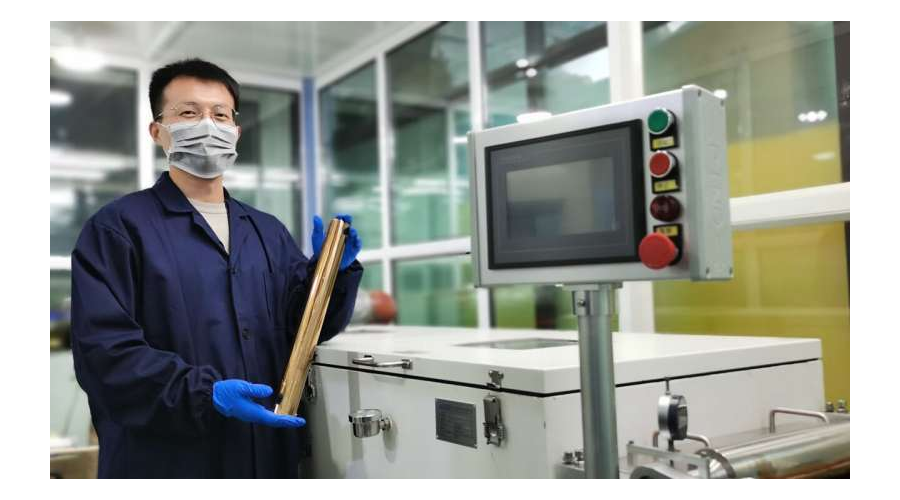
Proton exchange membrane fuel cells (PEMFCs) are energy cells that can rework the chemical power produced through the electrochemical response between hydrogen and oxygen into electrical power. While these cells might be extremely promising power options, most of them can solely operate at restricted temperature ranges, resembling 80 to 90 levels Celsius or 140 to 180 levels Celsius.
Researchers at the Chinese Academy of Sciences, Tianjin Normal University and Tianjin University have lately designed a brand new sort of PEMFCs that can operate throughout a far wider vary of temperatures, particularly from -20 to 200 levels Celsius. Their paper, revealed in Nature Energy, might facilitate the widespread use of PEMFC technology, whereas additionally lowering its fabrication prices.
“When we think about the leakage of phosphoric acid (PA) from a polybenzimidazole (PBI) membrane, we believe that one molecule of benzimidazole would absorb one molecule of PA, according to the concept of acid-base interactions,” Nanwen Li, one of many authors of the paper, informed TechXplore. “All other PA molecules in the PBI membrane, on the other hand, are mostly retained by hydrogen-bonding interactions. This is like a dog chain that restrains a dog, so that other dogs just follow this dog by kinship. However, if we can create a dog kennel, all the dogs in this kennel would not be able to come out easily if the front door is closed.”
The major intention of the latest research carried out by Li and his colleagues was to create a membrane that might soak up PA. To additional strengthen its skill to seize PA, the researchers leveraged what is called the ‘capillary siphoning impact,” an impact by way of which liquids can be easilyabsorbed.
When making use of the capillary siphoning impact to a standard membrane, liquid may nonetheless not be simply launched. Therefore, the workforce determined to fabricate the membrane utilizing Tröger’s base (TB) polymers, supplies with an ultra-high intrinsic microporosity.
“The ultra-micropores in the TB polymer act as capillaries for the PA absorption and retention, like in the dog kennel metaphor,” Li defined. “By adjusting the chemical structure of the monomer, the polymer membrane pore size and distribution could be controlled. One membrane with the pore size of about 3.5 Å showed the best siphoning effect of PA molecules, and thus the best conductivity stability and fuel cell performance under a broad range of operating temperatures.”

The membranes’ fabrication course of. Credit: Tang et al.
Fuel cells sometimes work by electrochemically oxidizing fuels, resembling hydrogen, within the presence of air or oxygen, in the end producing electrical power and water. The proton conductive membrane contained in PEMFCs is coated with a catalytic substance on either side, to set off electrochemical reactions between the anode (hydrogen) and cathode (oxygen) inside a cell.
“Among others, there are two primary functions of the membrane: one is to conduct the protons catalytically produced at the anode to transport them to the cathode and combine them with oxygen, ultimately producing water, while the other is to force the electrons (i.e., electrical energy) produced catalytically at the anode, through an exterior circuit, where they complete the circuit and produce water,” Li stated. “One can think of fuel cells as a highly controlled catalytic combustion of hydrogen and oxygen, which does not explode as it would if ignited, but releases electrical energy on demand. Electrolysis, or the splitting of water, is really just the reverse, where you input electrical energy to split water into hydrogen and oxygen.”
Using the PA-doped ultra-microporous membrane they created, Li and his colleagues had been ready to fabricate fuel cells that can operate at a really broad vary of temperatures. This is a exceptional achievement, as beforehand developed PEMFCs can solely operate at restricted temperature ranges.
“Using our design, the fuel cell stack would be simplified significantly,” Li stated. “We believe that the siphoning effect for the PA absorption into the ultra-micropores is significant for the development of highly performing high-temperature PEMFCs and also would improve the overall fuel cell system, allowing it to be operated without auxiliary heating systems.”
The new membrane and cell design might quickly lead to the event of better-performing PEMFCs, whereas additionally considerably lowering their fabrication prices. In their subsequent research, Li and his colleagues plan to apply the capillary siphoning impact to the catalyst layer too, to enhance its effectiveness and scale back catalyst loading.
In addition, they are going to be specializing in micro-tuning the scale of the membrane’s pores and the distribution of the mixing, co-polymerization and crosslinking. This might in the end assist to enhance the soundness and conductivity of the fuel cells additional.
“We would also like to design and prepare PBI systems with the same kind of ultra-microporosity as the membranes we used, which could be easier to apply in the energy industry,” Li added. “Moreover, the same siphoning effect we produced could also be utilized in the catalyst layer, to hold the PA molecules within the catalyst layer and thus avoid the adverse impact of phosphate poisoning of the Pt catalyst. Therefore, we anticipate that high catalyst utilization and thus low catalyst loading will be achieved for high temperature proton exchange membrane fuel cells.”
Read the most up to date Fuel Cell and Hydrogen Industry news at FuelCellsWorks




